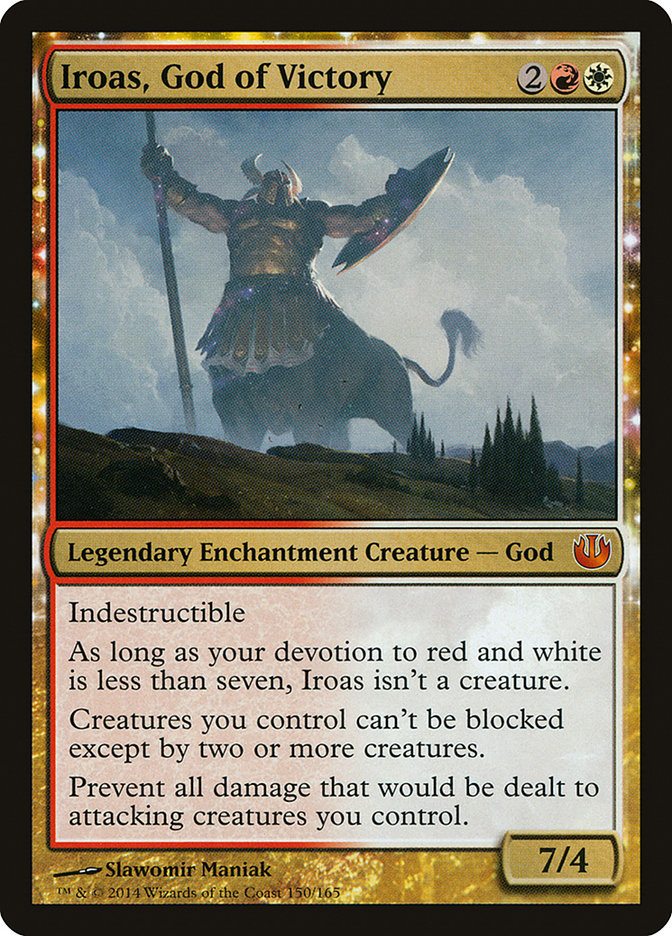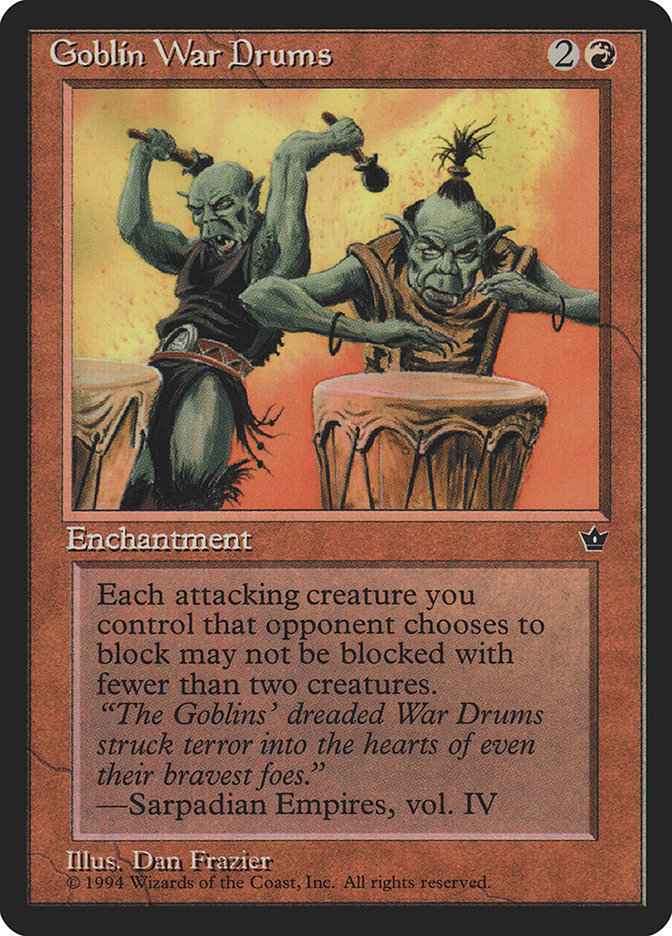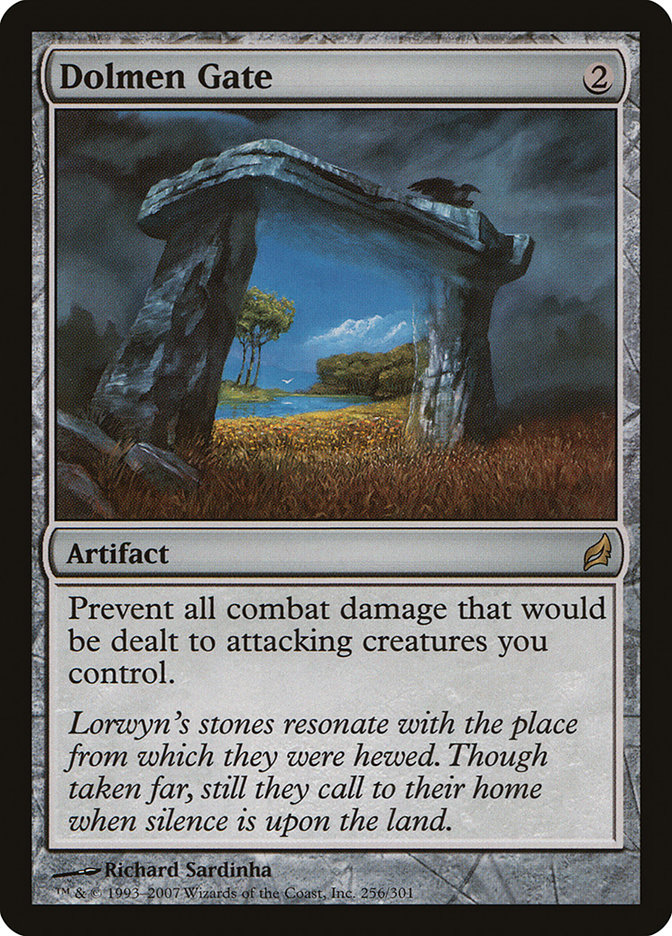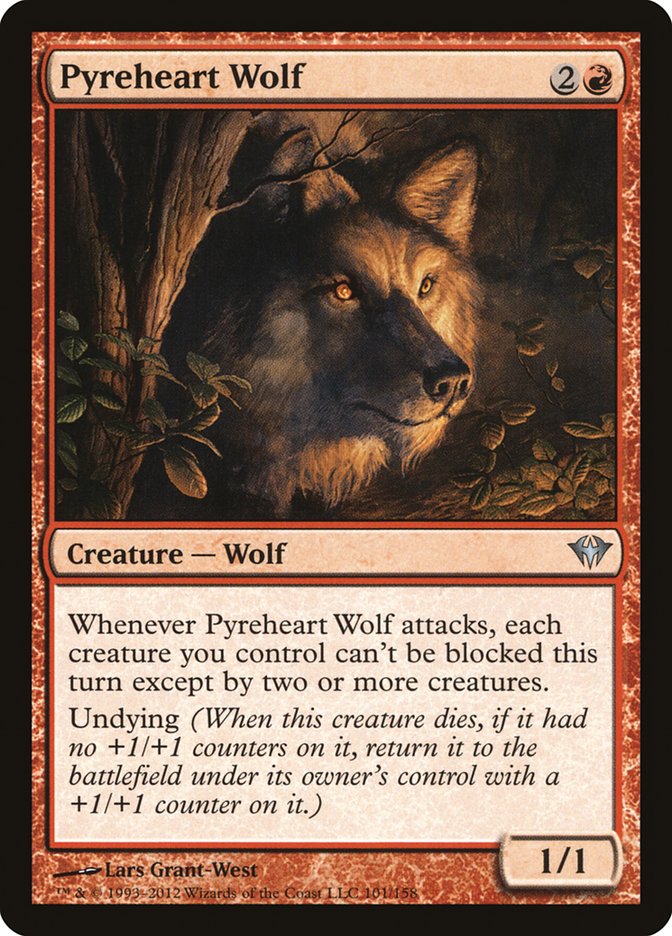If you had to choose to be completely invisible Monday through Friday or Saturday and Sunday, which would you choose?
Spoiler season is finally under way!
What is likely to be one of the most talked about cards from Journey into Nyx has just been unveiled, and frankly I am really ready to move on from this relatively unexciting Standard format.
Journey into Nyx has a fairly Herculean task in front of it. Thoughtseize puts enormous pressure on the format, much the same way Counterspell would. If the best deck ever becomes a Thoughtseize deck, it is harder than usual for the metagame to evolve past that point. The reason? Whatever it is you put in your deck to be good against the Thoughtseize deck is a prime candidate to be taken by Thoughtseize itself.
So while Theros turned Magic completely on its head, in many ways overshadowing Return to Ravnica block (with the primary exception being the notorious Azorius guild), it did so with a heavy price. Theros is not just a very powerful set; it combines with the Azorius guild to create a very hostile world for most would-be strategies given the plentiful supply of all-purpose answers.
Born of the Gods did inject some life into the format, with Courser of Kruphix and Brimaz, King of Oreskos giving a much needed power boost to green and white. Sadly, however, it hasn’t exactly broken up the dominance of Mono-Black Devotion, with Mono-Blue Devotion and Esper Control just underneath it.
Now that we’ve had more than two months of Born of the Gods Standard and not gotten the metagame upheaval we were hoping for, more is being asked of Journey into Nyx. There is almost a sense of urgency that Journey into Nyx needs to not only mix things up but to do so quickly.
One of the biggest failings of Born of the Gods compared to Theros was the second God cycle. After all, let’s compare the first two cycles:
Theros
1. Thassa, God of the Sea – Pillar of the format, Top 5 cards in Standard
2. Erebos, God of the Dead – Tier 1 tournament staple
3. Purphoros, God of the Forge – Initial staple, now fringe
4. Nylea, God of the Hunt – Initial niche role player, now fringe
5. Heliod, God of the Sun – Fringe
Born of the Gods
1. Ephara, God of the Polis – Niche role player
2. Xenagos, God of Revels – Niche role player
3. Mogis, God of Slaughter – Borderline fringe
4. Phenax, God of Deception – Not played competitively
5. Karametra, God of Harvests – Not played competitively
One of the biggest ways Journey into Nyx can have an impact on the format is if the third and final God cycle comes together a little more. This past weekend’s first round of previews included the first of the Journey into Nyx Gods, the appropriately named Iroas, God of Victory.
In keeping with the Born of the Gods devotion scheme, Iroas needs seven devotion to wake up. Also in keeping with BNG, it is all static ability, no activated ability. The most straightforward way to evaluate a new God’s power level is to look at it like an enchantment that has this game text and then determine how often you need it to wake up to be "worth it."
Savvy readers may have realized that Iroas’ text is basically a combination of the following two cards:
It should be noted that the damage prevention ability on Iroas is slightly different than Dolmen Gate because it prevents all damage to your attackers, not just combat damage. This is a relatively minor point and doesn’t change normal case usage.
It’s easy for people to poke fun at these abilities because of one being found on a Fallen Empires common and the other on a bulk rare. Remember these little numbers?
This type of evasion is actually quite strong, and given Iroas’ indestructibility starting on turn 4, blocking is basically completely nerfed for the rest of the game. The real question is how much we would be willing to pay for this ability.
Goblin War Drums at three is probably slightly weaker than Gruul War Chant in general. Would it be a good deal at two? We kind of want more out of our card than just this, which conveniently works out since Iroas forces us to buy two other abilities. Having to spend four mana on your War Drums effect is actually not too bad since it gives you more time to have more creatures in play to take advantage of it.
This brings us to the Dolmen Gate ability. Prevent all damage to your attackers, huh? While this does "combo" with the first ability, the two abilities put together are mostly not as good as "unblockable." Nevertheless, it is something we’re interested in, particularly if we often end up in ground stalls.
Would I play with Goblin War Drums if you threw in a Dolmen Gate for free? Maybe. You at least have my attention. I know I wouldn’t pay 2RW, but I guess I might pay 1RW under the right circumstances. So are we going to get at least a mana’s worth of value on the average from Iroas waking up?
As we’ve learned from the Born of the Gods cycle, getting to a devotion of seven is a much taller order than a devotion of five. Ephara and Xenagos both see play because of how strong of an impact they have even when they don’t wake up. Then when they do wake up, it’s kind of a bonus. If Iroas is held to that same standard, it probably falls a little short. However, it does have something else going for itself.
When Iroas wakes up, it’s a 7/4 indestructible that is hard to block. That is a bigger body (since the toughness is already virtually infinite) than most and a deadlier threat. Another factor to consider is how much the printing of Journey into Nyx will affect the ease at which players hit seven devotion. After all, each set added to the mix adds some number of multi-symbol cards, some number of cantrips, and extra ways to get devotion.
Let’s take a look at a few possible homes for Iroas. It’s not like the Boros color combination is short on existing decks, so there are a lot of places it could go on the first day. The ceiling on the card is high enough that we also want to look for new archetypes that might spawn around it.
Right now there are basically two types of Boros decks getting played in Standard. The first and most popular is R/W Burn. This archetype isn’t a good fit for Iroas, though, as it is all spells. If you aren’t making a lot of creatures extremely difficult to block, you’re just not going to get your money’s worth.
The other style of Boros is white aggro splashing Boros Charm. Here Iroas makes total sense. One of the typical weaknesses of white aggro is reach, and Iroas’ ability to help your team punch through could be invaluable. Additionally, a lot of great white aggro cards already have double mana symbols, helping give Iroas a realistic chance of waking up.
Here is a possible prototype, with some funny numbers to learn faster:
Creatures (29)
- 1 Dryad Militant
- 4 Precinct Captain
- 4 Boros Elite
- 1 Sunhome Guildmage
- 3 Boros Reckoner
- 3 Banisher Priest
- 4 Soldier of the Pantheon
- 4 Akroan Hoplite
- 3 Brimaz, King of Oreskos
- 2 Iroas, God of Victory
Lands (8)
Spells (23)

It’s possible the more conservative approach of using Daring Skyjek instead of Akroan Hoplite is better, but we know how good the Skyjek is. If the Hoplite pulls its weight, that’s a big win, as it means Iroas is more likely to wake up. Similarly Sunhome Guildmage might be too slow, too expensive, or too weak, but we want to learn about it.
It’s pretty unlikely that the right numbers of Boros Reckoner, Banisher Priest, and Brimaz are each three. However, each has its advantages, and this way we can learn from each. Boros Reckoner doesn’t usually get played in this sort of deck, but how much does it change things that it gives us 60 percent of the devotion we need for Iroas all by itself?
Why are there only two copies of Iroas? Iroas is not so obviously powerful that we just want as many copies as we can get, and we don’t need to draw it every game. Playing just two increases the chance we’ll be happy with Iroas when we draw it. If it overperforms, it’s the easiest thing in the world to add more.
Ephara has been primarily landing in mostly blue or mostly white decks, and I kind of imagine Iroas’ fate to be similar (with red and white obviously). Not all of the Gods need to be this way (such as Xenagos in decks that are truly 50/50 between red and green), but Iroas wants you to be very aggressive. Being slanted toward one color improves your consistency early.
Another possible white splash red approach is to aim bigger. We can build a glorified devotion to white deck, with Nykthos as the primary payoff but with Iroas helping make up for Heliod being a little lackluster.
Creatures (29)
- 4 Precinct Captain
- 3 Angel of Serenity
- 2 Sunhome Guildmage
- 2 Wojek Halberdiers
- 4 Boros Reckoner
- 4 Banisher Priest
- 1 Heliod, God of the Sun
- 4 Soldier of the Pantheon
- 3 Brimaz, King of Oreskos
- 2 Iroas, God of Victory
Lands (11)
Spells (20)

The problem with this style is twofold. First, the more red mana symbols on your cards, the weaker Nykthos is. Second, Iroas kind of wants to be the last guy to the party. Having a curve that goes higher doesn’t make full use of Iroas as a permanent Falter.
While white decks offer more mana symbols to wake Iroas up, it’s possible we should be focusing on it as an enchantment that makes our creatures difficult to block. If waking Iroas up is just a happy bonus against creature-heavy decks like Mono-Blue Devotion, W/x Aggro, and G/R/x Monsters, Iroas could be a pretty addition to red aggro.
Red aggro already doesn’t mind a white splash for Boros Charm or Chained to the Rocks.
Creatures (31)
- 1 Ash Zealot
- 4 Gore-House Chainwalker
- 4 Rakdos Cackler
- 4 Burning-Tree Emissary
- 4 Firefist Striker
- 1 Foundry Street Denizen
- 4 Boros Reckoner
- 3 Rubblebelt Maaka
- 4 Firedrinker Satyr
- 2 Iroas, God of Victory
Lands (14)
Spells (15)

This build is obviously less likely to wake Iroas up, but the ability to make your team mostly unblockable is super valuable with so many fast dudes. The one Mizzium Mortars and one Boros Charm don’t make the most sense (it should likely be two Mortars or one Mortars and the fourth Maaka), but I want to try both and see if they make sense.
My confidence isn’t super high on Foundry Street Denizen, but it would be nice to have another one-drop. Hopefully, Journey into Nyx has an ideal substitute (and maybe we can go up a little on one-drops as a whole).
While Iroas is likely pretty nice here, it and Chained to the Rocks have to deliver some pretty big results. Adding four copies of Sacred Foundry is no big deal, but six true tapped lands is pretty brutal.
Another possibility is to add Iroas to a devotion to red deck as a complement to Purphoros and Fanatic of Mogis.
Creatures (27)
- 4 Ash Zealot
- 4 Frostburn Weird
- 4 Burning-Tree Emissary
- 4 Boros Reckoner
- 3 Purphoros, God of the Forge
- 3 Stormbreath Dragon
- 3 Fanatic of Mogis
- 2 Iroas, God of Victory
Lands (12)
Spells (21)

Nykthos generally works better in R/W Devotion than W/R Devotion, plus the default color to splash in red devotion is already white. This bodes well for the possibility of an Iroas splash, though the tradeoff is that this isn’t the deck that best capitalizes on the text or Iroas for unblockability.
Instead, R/W Devotion focuses on creating a dominating board position. Cards like Ash Zealot, Frostburn Weird, and Boros Reckoner are great at locking up the game, giving us time to wake the Gods up.
Of course, if we’re going to try waking Gods up, it’s possible we’re just supposed to go all out and put Iroas, Heliod, and Purphoros in the same deck. Maybe that is too ambitious, but their abilities all stack well in a token deck.
Creatures (22)
- 4 Precinct Captain
- 4 Sunhome Guildmage
- 4 Boros Reckoner
- 2 Banisher Priest
- 1 Heliod, God of the Sun
- 2 Purphoros, God of the Forge
- 3 Brimaz, King of Oreskos
- 2 Iroas, God of Victory
Planeswalkers (3)
Lands (15)
Spells (20)

It’s tough that we have more white symbols than red but more copies of Purphoros than Heliod. I’m not sure the right balance, but I guess it depends on how much of the power of the Gods in here is tied up in awakening them. Once we are playing this much land and can afford to play the full twelve duals, it starts becoming totally reasonable to consider double red cards. In fact, this list has more than enough red mana to play double red cards that cost three, possibly even some two-drops, if there’s some we really want. The reason for needing so many red sources is to support Chained to the Rocks.
So what’s the overall verdict on Iroas? I’m super excited about this text box if the format is about creatures. What’s tough is that lately the format has been a lot less about text boxes and a lot more about card draw and removal. For instance, what does Iroas do for you against a Sphinx’s Revelation deck? It sounds pretty rancid. What about against a black deck? At least there we can attack with impunity into Desecration Demon, Nightveil Specter, or Pack Rat. Unfortunately, the more removal and discard they play, the worse Iroas is, not to mention it being an obvious target for Lifebane Zombie.
If however the cards exist in Journey into Nyx to make the format more about Thassa, God of the Sea; Polukranos, World Eater; Stormbreath Dragon; and Xathrid Necromancer, Iroas actually matches up quite well. It’s so good in creature matchups that I actually kind of see it as a small piece of evidence that we are less likely to move toward that world.
I look forward to previews that I can be more optimistic about, but sadly the way to beat Iroas is to play the exact same obnoxious things as now. My hope though is that Iroas is a safety valve of sorts, a way to fight back against the awesome creatures that are to come. Another possibility is that Iroas just ends up not being that good so it doesn’t actually pressure us to play Thoughtseize / removal / card draw decks.
With preview season literally just starting, it’s too early to make too bold of conclusions, as we haven’t exactly seen a game changer like Jace, the Mind Sculptor. One thing is for certain—the tournament scene needs shaking up. This past weekend’s Standard Grand Prix in Phoenix concluded with Mono-Black Devotion versus Mono-Blue Devotion in the finals.
The same two decks that were the top decks coming out of Pro Tour Theros.
Six months ago.
That in and of itself is not that big a deal; it just kind of sums up the past six months of Thoughtseizeing.
Anyway, I’m hopeful that Journey into Nyx will have something to turn the format on its head. With Drown in Sorrow and Bile Blight in Born of the Gods, my guess is a push the other way this time around.
As for me, this past weekend I just played Esper Control. Not wanting to face any more black mirror matches, I decided to Sphinx’s Revelation it up, though I probably should have just played EFro’s B/R Devotion deck (again). Here’s the list I played (which is largely just PVDDR’s GP-winning list).
Creatures (1)
Planeswalkers (7)
Lands (20)
Spells (32)
- 2 Plains
- 5 Island
- 1 Last Breath
- 2 Syncopate
- 2 Thoughtseize
- 1 Revoke Existence
- 4 Supreme Verdict
- 4 Detention Sphere
- 4 Sphinx's Revelation
- 1 Dimir Charm
- 1 Devour Flesh
- 1 Far
- 4 Dissolve
Sideboard

In the end, the main thing I learned is that being invisible some amount of the time is way better than all of the time and that my biggest concern would be continuing to have my freedom (as opposed to being caged in a lab and studied). Once those concerns are set aside, I think the weekend versus weekday debate really just speaks to what you are planning on doing with your newfound powers.
It’s amazing what you have the time to discuss after a day 1 elimination . . .
What do I recommend to beat this week’s top decks of black and blue? I recommend playing black and/or blue.
Fortunately, Journey into Nyx previews are coming fast and hard. I’ll be back on Monday to jump into one I’m really excited about but want to build around a little more before discussing. I’m also looking for a second card to talk about, so let me know which card you’d like to see evaluated and built around. Whichever receives the most votes will also be covered Monday. Feel free to vote for as many different cards as you like, but remember each vote makes each of your other votes weaker.
Role player, maybe fringe unless Journey into Nyx pushes the format back toward creatures not named Lifebane Zombie, which I am really rooting for.
See you Monday!





